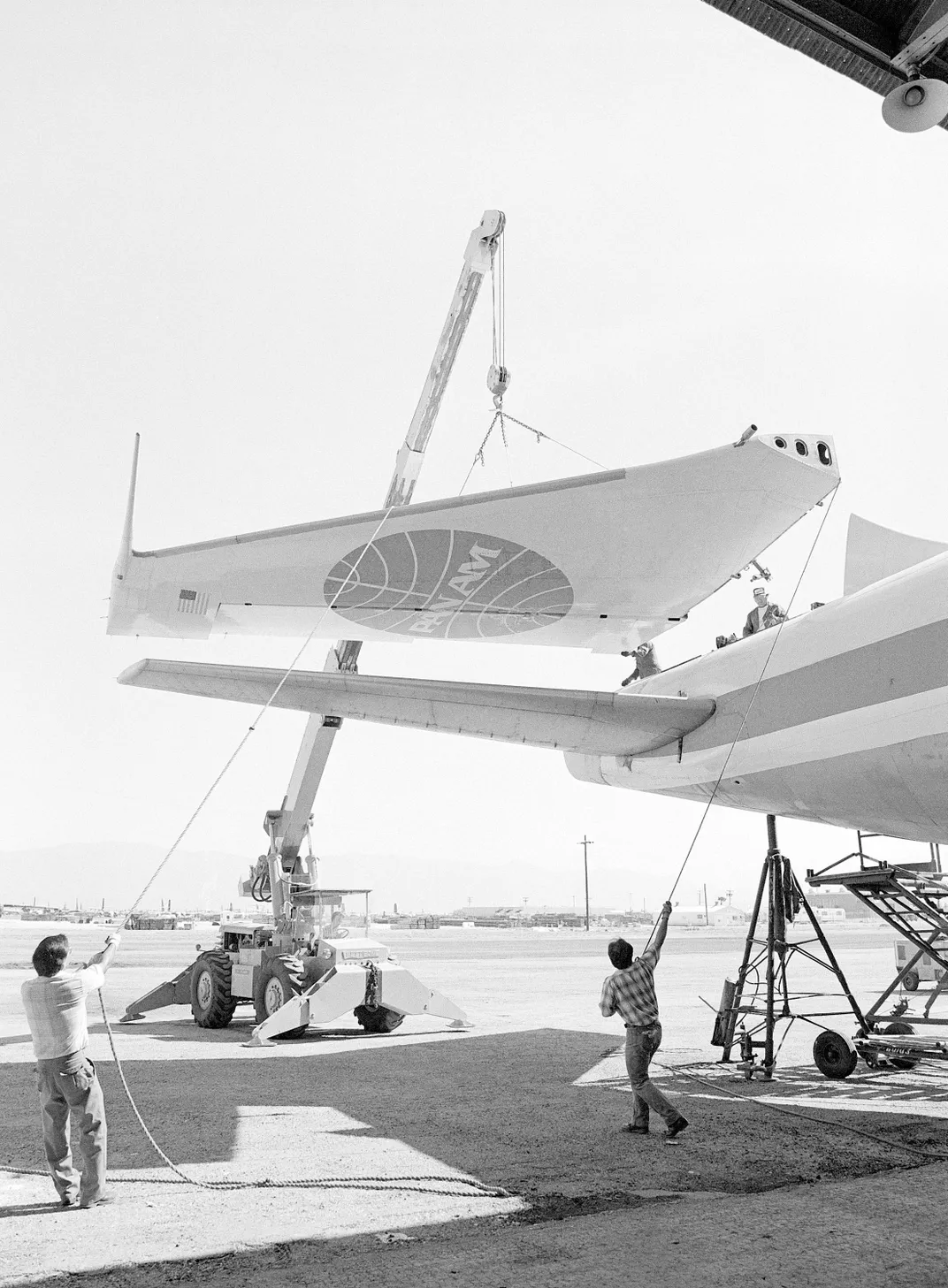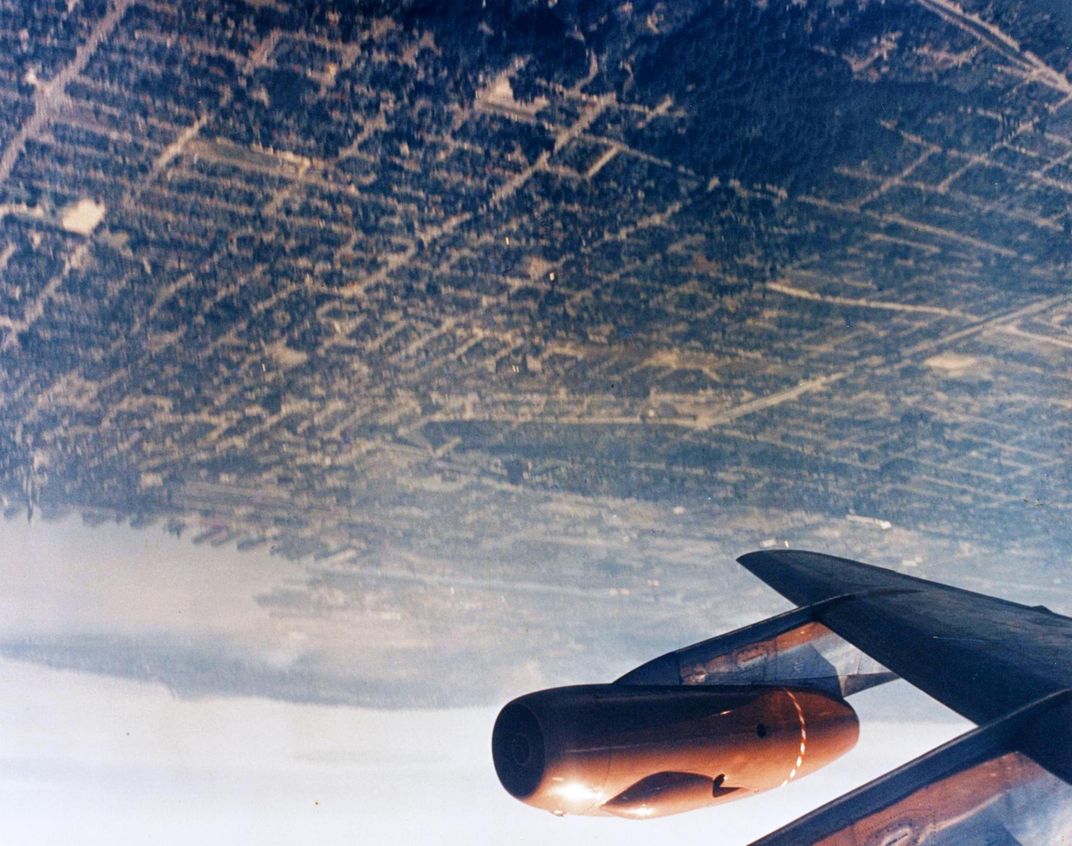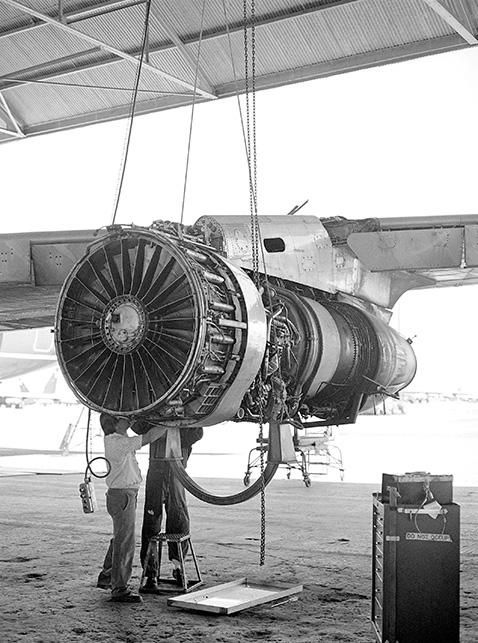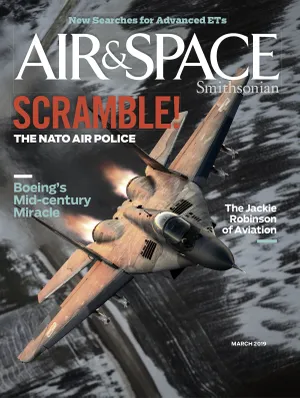Seven Oh Seven
The airplane that ushered in the Jet Age.
/https://tf-cmsv2-smithsonianmag-media.s3.amazonaws.com/filer/b0/30/b030e465-ea7a-4a6e-a25d-17c0d790a861/05h_fm2019_nasm2014-04316_live.jpg)
Boeing President Bill Allen gambled in the early 1950s, when he directed the company to invest $16 million in the Dash 80 jet prototype before a single customer had committed to buying the next-generation airplanes it would spawn: the KC-135 military tanker and the 707 airliner. When Pan Am placed an order for 20 707s in October 1955, Allen won the bet. Led by Maynard Pennell, a manager on the B-29 Superfortress, the 707 program made rapid transatlantic crossing available even to middle-class Americans while supplying an instantly recognizable symbol of American ingenuity. It had the largest passenger cabin in the sky, with 100 windows, enough that every row of seats would have one, no matter how the seats were arranged. Pan Am’s Juan Trippe offered to pay Boeing a bonus of $25,000 for each month ahead of schedule that Pan Am took delivery. He got the first production 707 just under eight months after the design’s first flight, on December 20, 1957. The future was in no mood to wait.
High-Pressure Pedal
Airlines resisted the installation of a hydraulic boost system for the rudder, fearing that a fluid leak could leave the pilot with no control. But a dead outboard engine could require 100 pounds of uninterrupted pressure on a pedal to correct the imbalance—too much for many or even most pilots, especially those of below-average height. Production 707s used hydraulics to tame that big rudder.

Flap Like a Bird
The Dash 80 had taught Boeing engineers plenty about how to manage airflow at high speeds. Two sets of double-slotted flaps, plus a small “feeleron” and an outboard aileron, helped them assert control over the 707s “aerolasticity,” or tendency to flex its wings in rough air.
Downside Up
The pylons holding the four Pratt & Whitney JT3C-6 engines beneath the wings acted as air dams, keeping airflow on a straight path despite the sweep angle, conferring straightforward stall characteristics when airspeeds dropped too low for the wings to create lift.

Engine Innovation
The JT3C-6 turbojet shared the axial compressor design of the de Havilland Comet’s Avon jet, with a difference: Two compressors; one low pressure and one high, fed to the combustor and then to two turbines, again one low pressure and one high. Each two-spool engine generated 13,500 pounds of thrust.

Roomier
The 707’s aluminum skeleton was a triumph of brains over brawn: Closely-spaced oval rings anchored to two beams just under the floor line eliminated the need for heavy bulkheads, leaving more space for passengers.
